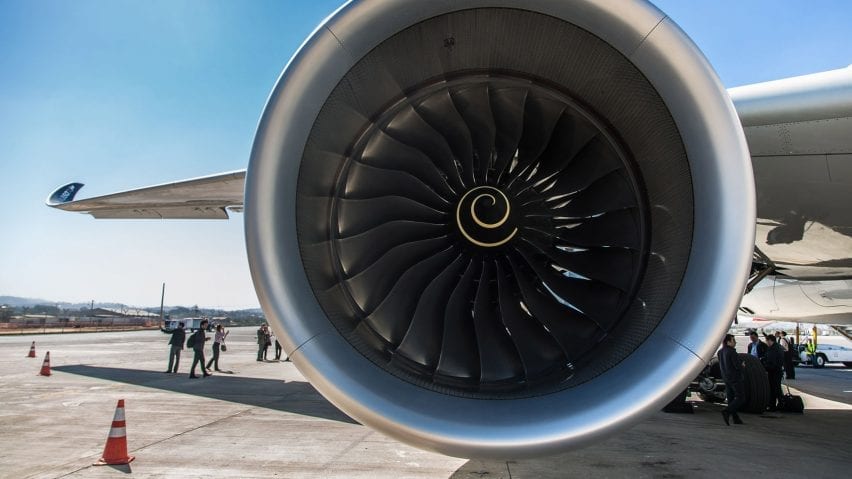
Rolls-Royce sets out plans to decarbonise aviation engines as part of net-zero drive
British engineering firm Rolls-Royce has laid out how it will achieve net-zero carbon emissions by 2050, including modifying its jet engines to run on renewable fuels.
The company will begin introducing jet engines that can run on sustainable aviation fuel (SAF) in 2023, although it only expects the new fuels to make up 10 per cent of total consumption by 2030.
"We are announcing plans to make all our new products compatible with net-zero by 2030, and all our products in operation compatible by 2050," said Rolls-Royce, which is the world's third-biggest supplier of jet engines.
It also produces power systems for the shipping industry and the energy sector.
SAF to play "a key role" in decarbonisation
SAF is made from non-fossil sources, meaning its emissions do not add additional CO2 to the atmosphere. Feedstocks include food and forestry waste as well as purpose-grown energy crops such as willow and algae.
Despite being up to five times more expensive than fossil-derived jet fuel today, biofuels will play "a key role to play in the decarbonisation of some of our markets, especially long-haul aviation," the engineering firm said.
SAF can be mixed with regular jet fuel but current regulations do not allow the mix to contain more than 50 per cent biofuel.
"We are playing an active role in advocating for this to rise to 100 per cent," said Rolls-Royce, which also committed to spending 75 per cent of its research and development budget on low-carbon technologies by 2025.
SAF could reduce carbon emissions by 70 per cent
Modifying engines to make them compatible with SAF could reduce carbon emissions by up to 70 per cent, the company said.
In the future, reductions in emissions are "assumed to increase to 100 per cent as production pathways for synthetically derived fuels mature".
Rolls-Royce announced details of its path to net-zero a year after joining the UN's Race to Zero campaign, which commits signatories to achieve net-zero carbon emissions by 2050 at the latest.
To qualify as net-zero, a company and its entire value chain must eliminate all greenhouse gas emissions. Any emissions it cannot eliminate must be offset using schemes that sequester carbon from the atmosphere.
Jet engines are usually powered by fuels based on kerosene, which comes from fossil sources. The aviation industry contributes around two per cent of all greenhouse gas emissions.
Aviation one of sectors "where achieving net-zero carbon is hardest"
Aviation is one of the few industries that cannot easily switch to electric power or capture its emissions, meaning it needs to find alternative ways of decarbonising.
"Our products and services are used in aviation, shipping and energy generation, where demand for power is increasing as the world's population grows, becomes increasingly urbanised, more affluent and requires more electricity," said Rolls-Royce CEO Warren East.
"These sectors are also among those where achieving net-zero carbon is hardest."
While electric aircraft are viable for short flights, batteries are currently too heavy for long-haul routes.
"You cannot capture the carbon off the back of the exhaust of aeroplanes and you cannot directly electrify long-distance freight and passenger aeroplanes," explained Christoph Beuttler, head of climate policy at Swiss carbon-capture company Climeworks, in an interview with Dezeen published this week.
In future, aircraft could be powered by synthetic kerosene made from captured atmospheric carbon mixed with green hydrogen, which is hydrogen extracted from water using renewable energy.
"You close the carbon cycle because the CO2 gets submitted back into the atmosphere once it's burned," explained Beuttler, in an interview conducted as part of Dezeen's carbon revolution series.
The main image is by Joao Carlos Medau.